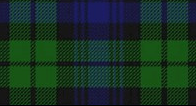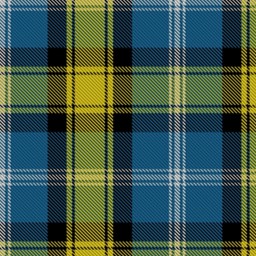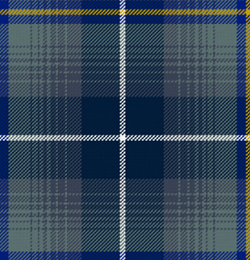Trade marks of Scotland: Tartan and Tweed
Thinking of Scotland calls to mind wild and rugged landscapes, incredible natural beauty, dramatic weather, and the various evocative Scottish accents. A mental image of “Scotland” will also likely feature the vibrant tartans and tweed fabrics that have been closely woven into Scottish history over thousands of years. Often symbolising membership of a particular family or clan, it is easy to see that tartans, in particular, have potential to act as “source identifiers” in the way that trade marks do – though for people, rather than for goods and services. Similarly, the activity of weaving tweed has come to be associated – legally as well as historically – with the Scottish Isle of Harris and its neighbours in the Outer Hebrides.
In this two-part Scottish-flavoured blog we explore how tartans and tweeds intersect with intellectual property rights, and learn a little about their history along the way…
A Brief Tartan History
Originally connected with the Scottish Highlands, tartan was initially associated with places, not people, because the dyes available to tartan producers tended to vary based on where they were based. As the influence of different ruling families grew, however, their control of a particular area meant that they became synonymous with the pattern of the tartan produced in that region. “Tartan” refers to the distinctive square or rectangular pattern, originally achieved by weaving different coloured threads. The Scottish Register of Tartans Act (2008) Section 2 defines it as: “’A tartan is a design which is capable of being woven consisting of two or more alternating coloured stripes which combine vertically and horizontally to form a repeated chequered pattern.’ The tartan pattern is traditionally known as the “sett” of the tartan.
“Tartan (the design) is a pattern that comprises two or more different solid-coloured stripes. These can be of similar, but are usually of differing, proportions that repeat in a defined sequence.
The earliest example of tartan found in Britain is the “Falkirk tartan”, which was discovered in Falkirk, Stirlingshire, and dates to the third century AD. Historians note that the classic twill weave used in tartan was designed to be heavier and more weather-resistant than other types of cloth weave, making it suitable for the variable northern climate.
Tartan appears in historical records from the 16th century, and we start to see evidence that wearing tartan was becoming a political, as well as a practical choice. This was cemented following the Acts of Union in 1706 when Scottish Lowlanders adopted tartan in protest against the Union. It ultimately became closely associated with the Jacobite restoration cause and was worn by Bonnie Prince Charlie at the Battle of Culloden. The wearing of Highland dress by men and boys (though not women or members of the landed gentry) was subsequently banned in the Dress Act of 1746. By the time the Act was repealed in 1782, wearing tartan was effectively the preserve of the upper and middle classes, and noble families began designing tartans for their personal use.
Famous Military and Family Tartans
There are thousands of different tartans listed in the official Scottish Register of Tartans, but some have become very well-known, through association with military regiments and royalty. Examples include Black Watch tartan, which is associated with the Black Watch, 3rd Battalion, Royal Regiment of Scotland and is worn as part of regimental dress.

Figure 1: Black Watch tartan
The British Royal Family has its own tartan, the Balmoral tartan, created in the 1850s by Queen Victoria and Prince Albert following their purchase of the Balmoral estate. King Charles III has his own version, based on the Balmoral sett, which was created in 2023 to mark a year since his coronation. The Royal tartans may only be woven under permission from the Scottish Tartan Authority following instruction by the Royal Household and are for the exclusive use of the Royal Family members. How active the Royal Family is in policing this beyond relying on conventions of respect and politeness, however, is unclear!
Tartan trade marks and copyright
A listing in the Scottish Register of Tartans doesn’t confer official intellectual property protection rights, so it is important to seek conventional protection. Some tartan patterns are registered as trade marks, with registration owners including Burberry and Historic Environment Scotland.
Other listings in the registry of tartans refer to restrictions on production and wear that, it says, are based on copyright. The entry for Fortnum & Mason’s signature tartan, for example, notes that copyright rests with Fortnum & Mason, and that permission to weave this tartan must be sought from that company and the tartan’s designer, Araminta Campbell. In the case of the tartan created to support Scotland Rugby Player and motor neurone disease campaigner, the late Doddie Weir, the “wearing and use of this tartan is restricted by BrowneWhite LTD T/A ScotlandShop & Logan Sports Media on Behalf of the My Name’5 Doddie Foundation.

Figure 2: The My Name’5 Doddie Foundation Tartan
The assertion of copyright in the register of tartans is a step towards protection, and courts have ruled that fabric design can qualify for copyright as a work of artistic craftsmanship so long as the fabric is:
(a) a work of craftsmanship, i.e. the creation of the fabric required skilful workmanship; and
(b) artistic, i.e. it was made with creative ability that produced aesthetic appeal.
For more on fabric copyright check out this article from Briffa Legal.
Registered Designs
Registering a tartan pattern and colourway as a design is perhaps the simplest way of obtaining protection for a tartan design. The process from application to registration can take as little as three weeks (in the UK) and costs are low, making it the fastest and most cost-effective way to gain IP protection. The Ryder Cup Europe Company has done this for a tartan designed to mark the 40th Ryder Cup match in 2014. This tartan was designed by Lochcarron of Scotland and also appears on the Scottish register of tartans.

Figure 3: The Ryder Cup Europe company’s tartan
To obtain protection, a design must be registered within the first year of its initial production and must be different from any previously published designs. The registration must be renewed every five years, for a maximum of 25 years. You can learn more about Registered Designs in our blog.
There’s no doubt that tartan will remain closely linked with Scotland and the proud Scottish diaspora for the foreseeable future.
Stay tuned for the next post, where we’ll look at the beautiful and practical fabric known as Tweed.
